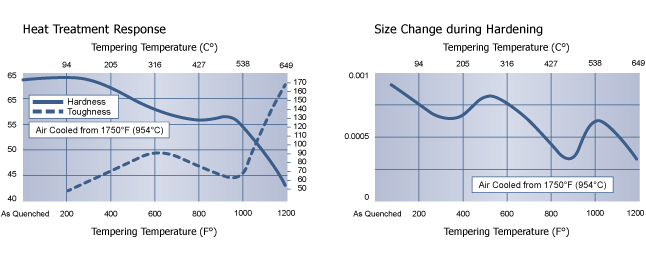If you’re working in an industry that requires high-quality tools, you’ve probably heard of A2 tool steel. A2 tool steel is a versatile material known for its toughness, wear resistance, and ability to hold a sharp edge even under heavy use. However, to get the most out of your A2 tool steel, you need to know how to heat treat it properly.
In this article, we’ll explore everything you need to know about heat treating A2 tool steel. We’ll cover the basics of what heat treating is and why it’s important, as well as the specific steps involved in heat treating A2 tool steel. We’ll also provide tips on how to ensure that your A2 tool steel is properly heat treated and ready for use.
What is Heat Treating?
Heat treating is a process used to alter the physical properties of a material by heating it to a specific temperature and then cooling it in a controlled manner. The goal of heat treating is to improve the material’s strength, hardness, toughness, ductility, or other mechanical or physical properties.
Heat treating can be done on a wide range of materials, including metals, plastics, ceramics, and composites. In the context of tool making, heat treating is commonly used on steels and other alloys to improve their performance and durability.
Why is Heat Treating Important for A2 Tool Steel?
A2 tool steel is a high-alloy, air-hardening tool steel with excellent wear resistance and toughness. It contains chromium and molybdenum, which help to increase its hardness and strength at high temperatures.
However, A2 tool steel must be properly heat treated in order to fully realize these benefits. If it’s not heated and cooled correctly during the manufacturing process or when sharpening or repairing tools made from this material, it may not perform as well as it should.
The Specifics of Heat Treating A2 Tool Steel
The heat treating process for A2 tool steel involves three distinct stages: austenitizing, quenching, and tempering. Let’s take a closer look at each of these steps.
Austenitizing
During the austenitizing stage, the A2 tool steel is heated to a specific temperature range where its microstructure transforms from ferrite and pearlite to austenite. This allows the material to become more malleable and easier to work with.
The exact temperature range for austenitizing A2 tool steel may vary depending on the specific application and manufacturer’s instructions. However, a common range is 1650-1750°F (900-955°C).
Quenching
Once the A2 tool steel has been heated to its austenitizing temperature, it must be rapidly cooled in a fluid medium such as oil or water. This process is known as quenching and helps to “freeze” the austenite into place, resulting in a harder material with improved wear resistance.
However, quenching can also cause the material to become brittle if done improperly. It’s important to follow the manufacturer’s instructions carefully and use the right type of quenching fluid for your application.
Tempering
The final stage of heat treating A2 tool steel is tempering. During this stage, the material is reheated to a lower temperature range than during austenitizing and held there for a period of time before being allowed to cool naturally.
Tempering helps to reduce any residual stresses in the material that may have built up during quenching and improves its toughness and ductility. The exact tempering temperature range will depend on the specific application and desired properties, but a common range is 350-700°F (175-370°C).
Tips for Properly Heat Treating A2 Tool Steel
Now that you understand the basic steps involved in heat treating A2 tool steel, let’s look at some tips for ensuring that your material is properly treated.
1. Follow manufacturer’s instructions: Always follow the manufacturer’s instructions for heat treating A2 tool steel, as they will provide specific guidance on what temperatures and fluids to use.
2. Use a proper quenching fluid: Choose a quenching fluid that is appropriate for your application and ensure that it’s at the correct temperature before quenching.
3. Monitor temperature closely: Use a high-quality thermometer or pyrometer to monitor the temperature of your A2 tool steel during each stage of heat treating.
4. Allow time for cooling: Be patient and allow your material to cool naturally after tempering, as this will help prevent cracking or warping.
5. Test the final product: After heat treating your A2 tool steel, test it thoroughly before putting it into use to ensure that it has the desired properties and performance.
Conclusion
Heat treating A2 tool steel is an essential process for anyone working with high-quality tools. By following the steps outlined in this article and using the right techniques and materials, you can ensure that your A2 tool steel will perform at its best and provide long-lasting durability and wear resistance.
References:
– Heat Treating Guide
– ASM Handbook Volume 4A: Steel Heat Treating Fundamentals and Processes




